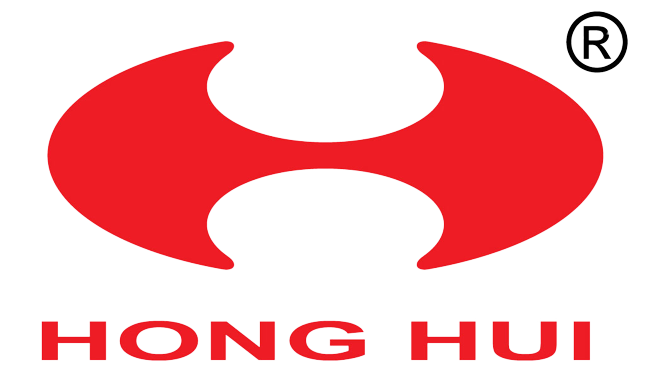24
2023
-
10
Understanding the Importance of Universal Joints in Automotive Transmission Systems
Universal joints play a pivotal role in the automotive industry, specifically in the transmission systems of vehicles. In this article, we will delve into the significance of universal joints, focusing on their relevance in ensuring seamless and efficient performance of automobiles. Universal joints, also known as U-joints, are mechanical devices that connect two shafts at an angle while allowing
Universal joints play a pivotal role in the automotive industry, specifically in the transmission systems of vehicles. In this article, we will delve into the significance of universal joints, focusing on their relevance in ensuring seamless and efficient performance of automobiles.
Universal joints, also known as U-joints, are mechanical devices that connect two shafts at an angle while allowing rotational movement between them. They are commonly used in the drivetrain or powertrain of vehicles, particularly in areas where a direct shaft connection is not feasible due to misalignment or variations in distance.
The primary function of a universal joint is to transmit torque and rotational movement from the transmission to the wheels. As part of the transmission system, it enables the smooth transfer of power generated by the engine to the wheels, facilitating movement and propulsion of the vehicle.
One significant advantage of universal joints is their ability to accommodate misalignment between shafts. This flexibility allows the joint to compensate for variations in angle and distance, ensuring a continuous and efficient power transmission. Without universal joints, the drivetrain would experience excessive stress and strain, leading to premature wear and potential failures.
In addition to compensating for misalignment, universal joints also provide a crucial solution for uneven surfaces and variations in suspension movement. As the wheels encounter bumps or uneven terrains, the suspension system adjusts to absorb the impact. The universal joints allow the driveshaft to adapt to these movements, maintaining a consistent power flow and minimizing vibrations and disturbances.
When it comes to maintenance, regular inspection and lubrication of universal joints are essential. Adequate lubrication helps reduce friction between the joint components, preventing excessive wear and extending their lifespan. Additionally, monitoring the condition of universal joints is crucial, as worn or damaged joints can lead to drivetrain inefficiencies, vibrations, and even safety hazards.
In conclusion, universal joints are integral components of automotive transmission systems, specifically in the field of automotive parts and accessories. Their ability to accommodate misalignment, adapt to variations in suspension movement, and facilitate seamless power transmission ensures smooth and efficient vehicle performance. Understanding the significance of universal joints can help both automotive professionals and enthusiasts appreciate the intricate workings of their vehicles' transmission systems.
Universal joints, also known as U-joints, are mechanical devices that connect two shafts at an angle while allowing rotational movement between them. They are commonly used in the drivetrain or powertrain of vehicles, particularly in areas where a direct shaft connection is not feasible due to misalignment or variations in distance.
The primary function of a universal joint is to transmit torque and rotational movement from the transmission to the wheels. As part of the transmission system, it enables the smooth transfer of power generated by the engine to the wheels, facilitating movement and propulsion of the vehicle.
One significant advantage of universal joints is their ability to accommodate misalignment between shafts. This flexibility allows the joint to compensate for variations in angle and distance, ensuring a continuous and efficient power transmission. Without universal joints, the drivetrain would experience excessive stress and strain, leading to premature wear and potential failures.
In addition to compensating for misalignment, universal joints also provide a crucial solution for uneven surfaces and variations in suspension movement. As the wheels encounter bumps or uneven terrains, the suspension system adjusts to absorb the impact. The universal joints allow the driveshaft to adapt to these movements, maintaining a consistent power flow and minimizing vibrations and disturbances.
When it comes to maintenance, regular inspection and lubrication of universal joints are essential. Adequate lubrication helps reduce friction between the joint components, preventing excessive wear and extending their lifespan. Additionally, monitoring the condition of universal joints is crucial, as worn or damaged joints can lead to drivetrain inefficiencies, vibrations, and even safety hazards.
In conclusion, universal joints are integral components of automotive transmission systems, specifically in the field of automotive parts and accessories. Their ability to accommodate misalignment, adapt to variations in suspension movement, and facilitate seamless power transmission ensures smooth and efficient vehicle performance. Understanding the significance of universal joints can help both automotive professionals and enthusiasts appreciate the intricate workings of their vehicles' transmission systems.
Related news
language
English
العربية
বাংলাদেশ
Български
Hrvatski
Česky
Dansk
Nederland
 Esperanto
Esperanto
Slovenski
Filipino
Suomi
Français
Maori
 Shqiptare
Shqiptare
Georgian
 Euskara
Euskara
Deutsch
Ελλάδα
ישראל
इंडिया
Magyarország
Ísland
Indonesia
Irlanda
Italia
日本語
Sovensko
Հայաստան
한국
Kyrgyz
ປະເທດລາວ
 Zulu
Zulu
Latvian
Lithuanian
Luxembourgish
 Latinus
Latinus
Macedonian
Малайская
Maltese
Монгол улс
 Cymraeg
Cymraeg
ဗမာ
 தமிழ்
தமிழ்
नेपाल
Norge
ایران
Polska
Portugal
România
Российская
Србија
 Slovak
Slovak
Србија
 Slovak
Slovak
Bosanski
Slovenian
Беларус
España
Sverige
Точик
ประเทศไทย
Türk
Azərbaycan
Uzbek
 Afrikaans
Afrikaans
Việt Nam
Share
Copyright© 2023 Jinjiang Honghui Automobile Parts Manufacture Co, Ltd. Powered by www.300.cn Tag

